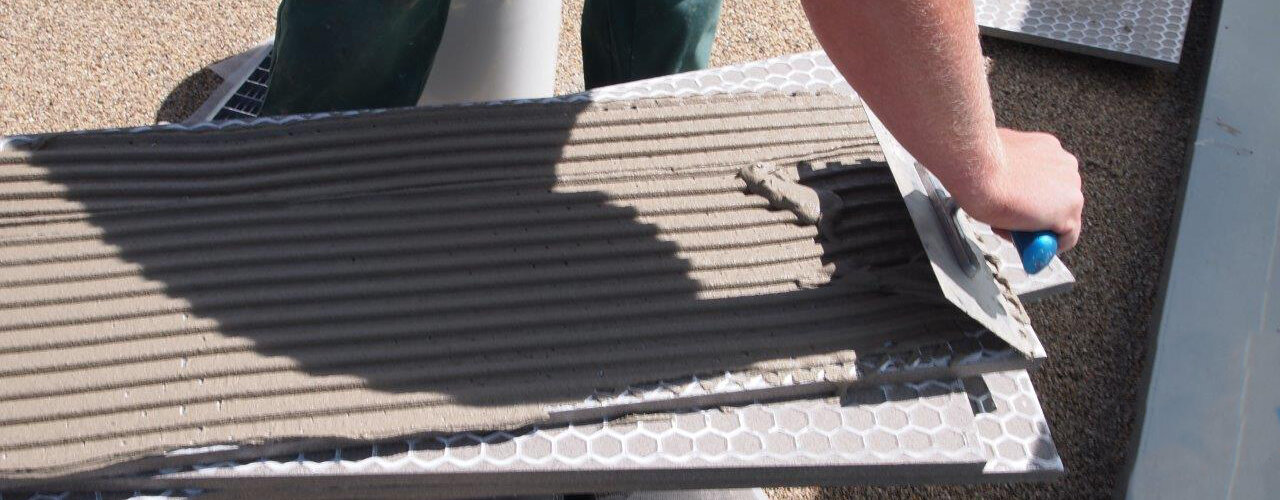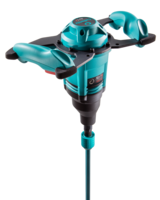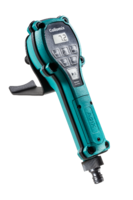
The Benefits of Mixing Properly
How to Mix Thinset
Thinset is a type of mortar used to adhere tile to cement or cement board using a combination of cement, fine sand, a water-retaining agent such as cellulose, and water, with a polymer added to more advanced formulations. When these elements are combined appropriately, you'll get a long-lasting bond that will give your work strong performance long into the future. However, doing a good job is important to prevent issues down the road. This includes using the right amount of water to avoid cracking or weakness in the bond, and this care continues all the way through the mixing process.
If you're wondering how to mix thinset for your project, the best answer is the right way. When mixing thinset mortar correctly, you'll get a strong mix that won't crack or crumble, withstanding time, pressure, and the elements. Mixing matters because poor mixing techniques and tools can impact your final result. To get the best results, you'll want to use the right tool for the job, whether you're mixing a large batch or a small amount. Here's how to mix thinset for your project.

Ingredients in Thinset Mortar
When you understand how the elements of thinset work together, you'll better understand the importance of thorough mixing.
Cement. Cement is a chemical substance that is a binding agent. It's used in a wide range of masonry applications and is typically incorporated into thinset as a powder. Rarely used on its own, it combines with water to bind the other ingredients to the substrate.
Fine sand. Fine sand is added to the mix to provide load-bearing capacity and strength to the mix. Making up a major portion of the thinset, mortar, or grout, fine sand provides the thinner profile needed for setting tiles as compared to creating concrete slabs, while still providing strength to the overall mix.
Water-retaining agents. Typically a form of cellulose, water-retaining agents allow the thinset mortar to set up more slowly, providing time for the cement to finish working and making it easier to work the thinset for a longer period of time before it sets up.
Polymers. If you want to add more strength or specific performance capabilities to your thinset, a mix that has polymers such as latex polymers can be helpful. These polymers improve the mix's performance both during application as well as in situ.
Water. It can be very tempting to add too much water to your thinset so that it will mix easily, but it's very important to not have your thinset too watery because this will weaken your bond. Follow the instructions very carefully to ensure that you get enough water to activate the cement without adding so much that it weakens it.
The tools for consistent mixing
KR Paddle
For mixing thinset mortar, mixing mortar for tile, or getting the best tile grout consistency, the KR paddle from Collomix provides a combination of high shear forces that mix your compounds effectively while preventing the formation of lumps. Because the material does not stick to the paddle, it's also very easy to clean on the job site, reducing your cleanup time between batches.
The Collomixer
Though many contractors use hammer drills and similar tools to mix cement-based compounds, a Collomixer should be carefully considered by any serious professional. Ergonomic design dramatically reduces pain and fatigue, while an appropriately-sized motor provides powerful mixing without making a mess.
What is the purpose of your mix?
Though terms are often used interchangeably, there are very specific differences between thinset, mortar, and grout. Let's look at the differences between these three compounds.
Thinset: Thinset is used to adhere tiles to a concrete slab or cement board.
Mortar: Mortar is used to stick bricks or blocks together.
Grout: Grout is used to fill the space between tiles on the surface.
By understanding the differences between these types of mixes, you can find the best mix for each project you undertake.

How to Mix Mortar for Tile
Choosing mixing tools. If you're wondering how to mix thinset mortar for your tilework, it's best to use a specialty tool known in the industry as a paddle mixer, such as an X01R or similar purpose-built tool. Though some contractors try to use a hammer drill for this process, it can often lead to messy results, fatigue, and pain. A paddle mixer is a hand-held motor that has ergonomically placed handles on both sides to reduce pain and fatigue.
The motor is designed to operate at high torque but at a low speed. Instead of overmixing your thinset, you'll be able to get the perfect combination of mixing and visibility to see exactly what point your mixing process is at. A paddle mixer can manage anywhere from 10 to 24 gallons of material at a time, allowing you to quickly mix a batch of thinset mortar for your project. The high torque is needed to move the heavy mix, while the slow speed prevents splatter and air entrainment.
These mixers are designed to handle more material than a drill, and given that drills tend to have comparatively high speed and low torque, drills can burn out quickly because of the strain, heat, and resistance that cement-based mixes will put on its motor. Because mixing also takes longer than drilling, the motor experiences significant strain due to the time involved, while the resistance of the material causes the motor to slow down and heat up. Paddle mixers are designed for mixing concrete and other mixed materials and hold up much better while handling more material.
Select the right paddle. Once you've decided on your mixing tool, it's time to select a paddle for the job. Though there are many paddle attachments that are available on the market, not all of them are designed to deliver the best results when you're mixing mortar for tile. In this situation, you'll want to select one that can deal with the viscosity required for mixing thinset mortar, such as the KR Paddle which delivers exceptional mixing torque to where it's needed most.
The paddle will need to handle mixing heavy, compound, viscous texture, delivering a great deal of force to the mix. You'll also want one that pulls the materials from the right direction to prevent air entrainment. Finally, you'll need one that's able to quickly remove any lumps that may form, an especially important factor given the thin consistency of thinset mortar.
You'll want a paddle that incorporates material from bottom to top so that all of the lighter, finer ingredients are mixed through the entire batch. This motion pulls up and blends water into the cement so that the mix will be properly incorporated and bound. Finally, the paddle should clean up easily to reduce cleanup time on the project.
Choose mixing containers. Now that you've found the appropriate mixing machine and paddle for your thinset mortar, you'll need a container to mix everything in. The best option in many situations is a bucket of an appropriate size. Your bucket should have a capacity that is about 1/3 larger than your maximum mixing amount, which reduces the risk of material being splattered outside of the bucket. You may want to consider the buckets available that are interchangeable with an automatic mixer to make it more functional for future work.
Similarly, dust is fairly common when the material is poured into the barrel. For this reason, make sure to have a pair of goggles and a face mask, or a dust extractor nearby to reduce airborne particulates that can impact your health or lead to an OSHA violation for airborne particulates.

How to Mix Tile Grout, Mortar, or Thinset
Whether you're wondering how to mix grout for tile, mortar for brickwork, or thinset for tile mortar, the process is fairly similar. If you have a pre-bagged mix, you already have the correct dry ingredients, allowing you to simply add the correct quantity of water.
Start by adding about 2/3 of the required water to the bucket, followed by your prebagged mix material. This process helps prevent you from having too thin a mix if there's a great deal of humidity in the air or if the mix has been sitting for a while.
Next, add the remainder of the water as needed. To get a mortar, thinset, or grout mix that provides the best results, durable performance, and long-lasting results, it's important to measure precisely and accurately. Watery mixes compromise strength and cause cracking. An automatic water dosser such as the AQiX provides the best precision.
Begin mixing using your chosen mixing motor and paddle. A proper tool and paddle doesn't require a lot of strength or force, just holding it upright and steady to allow the paddle to work. Stop once all the material has been thoroughly incorporated.
Check your mix, making sure it's not too watery or crumbly. If it slumps too easily or deforms, it may be too thin, while thinset mortar that is too crumbly may not work well or have sufficient water to activate the concrete. However, following the instructions on the bag should give you a proper mix.



